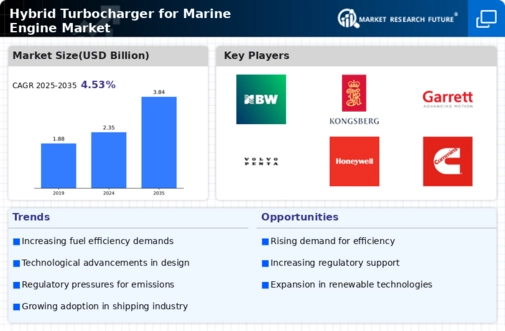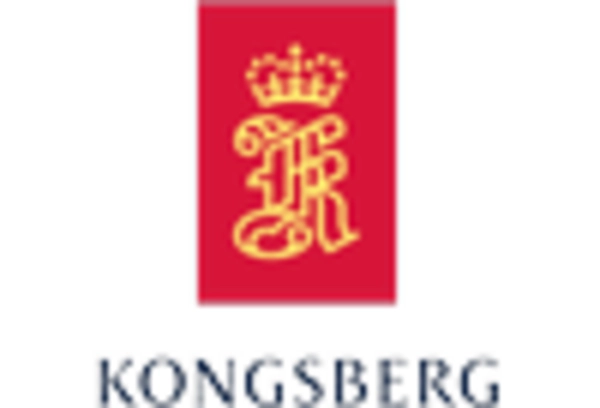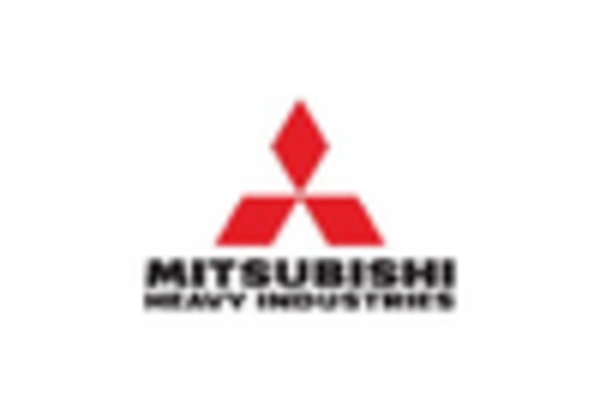Growing Demand for Energy Efficiency
The Hybrid Turbocharger for Marine Engine Market is witnessing a growing demand for energy efficiency among ship operators. As the maritime industry faces pressure to reduce operational costs and environmental impact, hybrid turbochargers emerge as a viable solution. These systems enhance the overall efficiency of marine engines, allowing vessels to operate at optimal performance levels while consuming less fuel. The trend towards energy-efficient technologies is likely to accelerate the adoption of hybrid turbochargers, as operators seek to balance performance with sustainability. This demand for efficiency is expected to drive market growth in the coming years.
Rising Fuel Prices and Economic Factors
The Hybrid Turbocharger for Marine Engine Market is also impacted by rising fuel prices, which compel ship operators to seek more efficient propulsion systems. As fuel costs continue to escalate, the economic viability of hybrid turbochargers becomes more pronounced. These systems can enhance fuel efficiency by optimizing the combustion process, thereby reducing operational costs. Market analysts suggest that the increasing financial pressure on shipping companies will likely drive the adoption of hybrid turbochargers, as they offer a compelling return on investment through fuel savings. This economic factor is expected to bolster the market's growth trajectory.
Increased Investment in Marine Infrastructure
The Hybrid Turbocharger for Marine Engine Market is benefiting from increased investment in marine infrastructure. Governments and private entities are allocating substantial resources to modernize ports and shipping facilities, which often includes upgrading marine engines to more efficient systems. This investment trend is likely to create opportunities for hybrid turbocharger manufacturers, as ship operators look to enhance their fleets with advanced technologies. The anticipated growth in marine infrastructure development suggests a favorable environment for the hybrid turbocharger market, potentially leading to increased adoption rates and market expansion.
Technological Advancements in Marine Engineering
The Hybrid Turbocharger for Marine Engine Market is experiencing a surge in technological advancements that enhance engine performance and efficiency. Innovations in turbocharger design, such as variable geometry and advanced materials, are being integrated into marine engines. These advancements not only improve fuel efficiency but also reduce emissions, aligning with international regulations. The market is projected to grow at a compound annual growth rate of approximately 5.2% over the next five years, driven by these technological improvements. As shipbuilders and operators seek to optimize their fleets, the adoption of hybrid turbochargers becomes increasingly attractive, suggesting a robust future for this segment.
Regulatory Compliance and Environmental Standards
The Hybrid Turbocharger for Marine Engine Market is significantly influenced by stringent regulatory compliance and environmental standards. Governments and international bodies are imposing regulations aimed at reducing greenhouse gas emissions from marine vessels. The International Maritime Organization has set ambitious targets for reducing emissions, which has led to a growing demand for hybrid turbochargers that can meet these standards. The market is expected to witness a shift towards cleaner technologies, with hybrid turbochargers playing a crucial role in achieving compliance. This trend indicates a potential increase in market share for manufacturers who prioritize environmentally friendly solutions.

















Leave a Comment